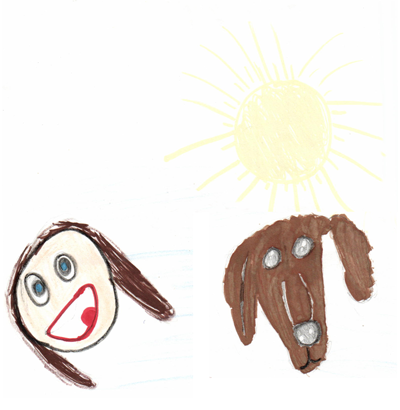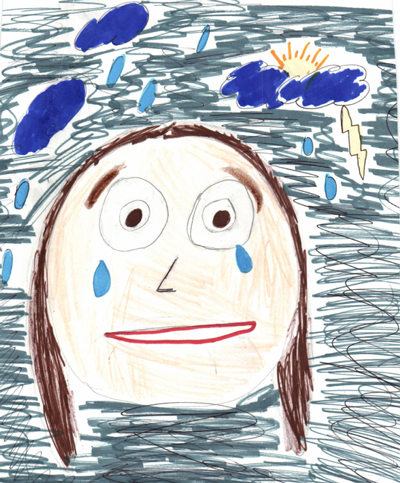
I am currently writing a series on okay ways for children to express their feelings after a loss and still have good behavior. From the example of Cain, who killed his brother Abel when he was so angry with him, we learned that there is a right way to pour out our feelings and a wrong way. (Genesis 4)
Last week, I listed one of the most common ways children can pour out their feelings and still have good behavior and that was Talking to Someone You Trust. The list included parents, grandparents, school guidance counselor, children’s pastor, professional counselor, support groups, and other kids who have experienced a loss.
While this is probably the most common way, let’s face it – every child is not going to talk freely. Hannah, my granddaughter and children’s illustrator for my blog, is one of those “non talkers” when it comes to discussing the realities of life. Hannah is a very outgoing ten-year old, yet her parents have to literally pull information out of her when talking with her.
The good news is Hannah loves to draw, as you can see from all the illustrations she has drawn for me this past year. She also loves to write, and has won the top award in creative writing at her school. Yes, you probably guessed it – drawing and writing is another way a child can express exactly how they are feeling about a loss in their life.
To show you how this works, I did an interview with Hannah about a loss in her life. The following is her answer, using the ways she best expresses herself – drawing and writing.
Question: Hannah, write a story about a loss you have had.
 Question: Draw a picture of your life BEFORE the loss of Rudy.
Question: Draw a picture of your life BEFORE the loss of Rudy.

Question: Draw a picture of your life AFTER the loss of Rudy.

Now, let’s see what we learned from Hanna’s writing and drawing:
- She was able to specifically name her loss. (her pet dog, Rudy)
- She told of her life before the loss of Rudy.
- She told of her life after the loss of Rudy.
- She described in writing her feelings both before his death and after his death.
- She also was able to illustrate her feelings.
- She was able to tell who comforted her during this time. (another child)
Hannah never spoke a word, but I found out exactly what I needed to know,
through her own writing and illustration, to help her process her loss.
And that’s the whole point: Adults finding out how their child best expresses his feelings and guide him through those feelings and still have good behavior. If he is not a talker, don’t try to force him to talk. Guide him in a way that is best suited for him to express his feelings.
My thanks to Hannah for this interview. I would appreciate you leaving her a comment and tell her what you thought. Remember, not only are we trying to help children who have experienced a loss, but we are also encouraging them as they progress through their journey.
Join Hannah and me again next week for another okay way to express feelings and have good behavior at the same time.










So sweet! My niece really is talented. Thanks for sharing her story.